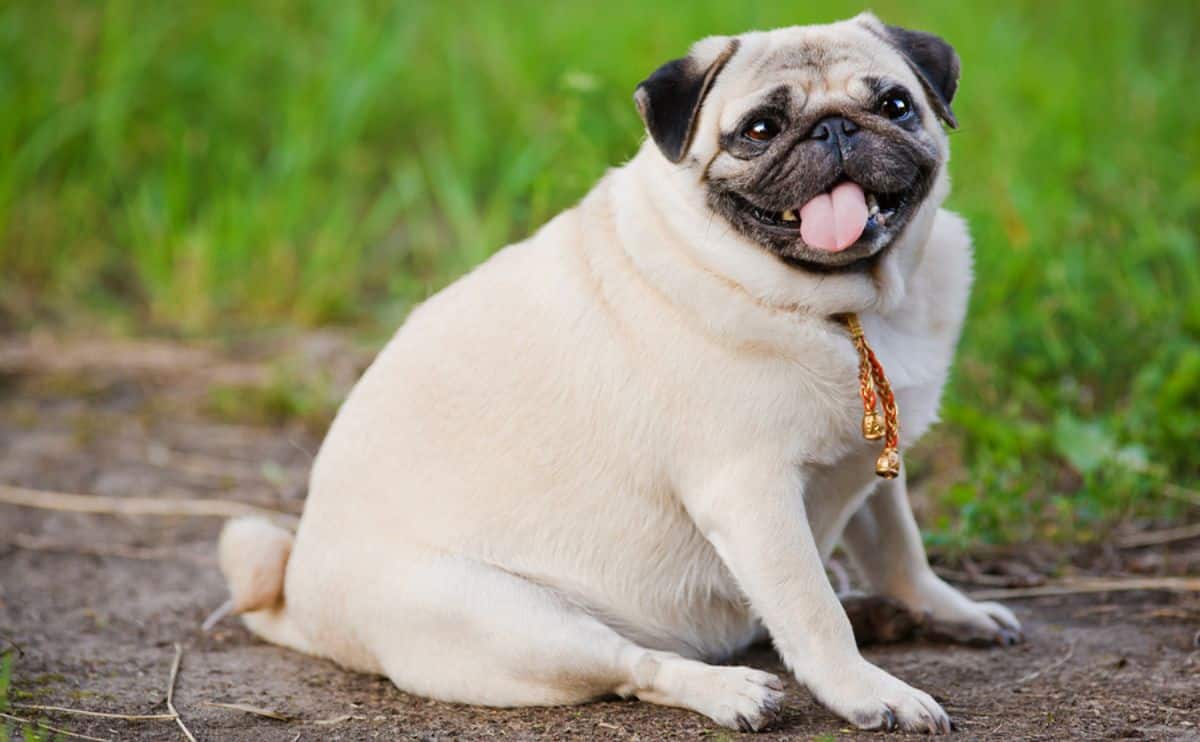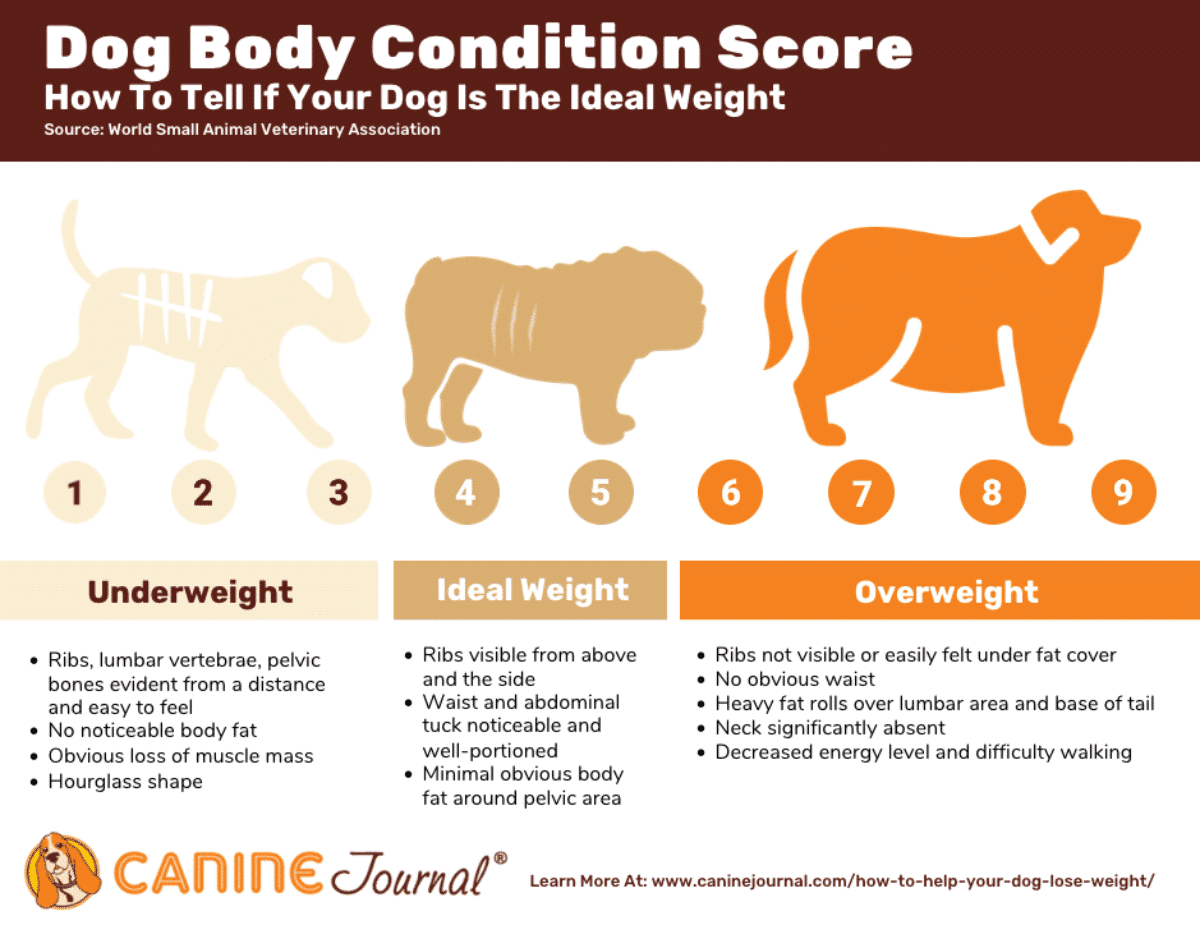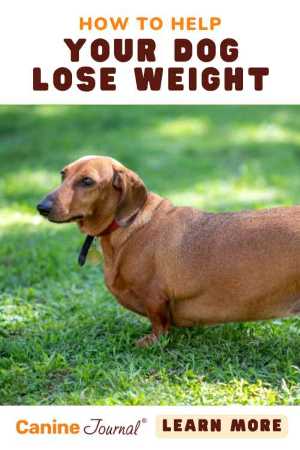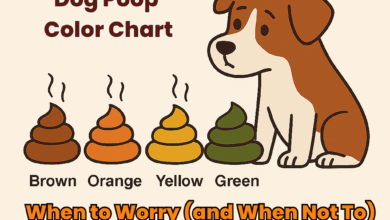When you purchase through links on our site, we may earn a commission. Here’s how it works.

Is your dog looking a little rounder than usual? You’re not alone. Dog obesity is on the rise, and those extra pounds can lead to serious health risks like joint pain, breathing issues, and even diabetes. But here’s the good news: With the right dog weight loss plan, you can help your pup slim down. And in the process, they’ll also feel better and live a longer, healthier life.
Table of Contents
In this guide, I’ll show you how to tell if your dog is overweight, the hidden dangers of extra weight, and how to help them lose weight. From choosing the best dog food for weight loss to making exercise fun and tracking progress, you’ll get everything you need to set your dog up for success. Let’s get started, because a healthier pup starts today!
Science Says Pet Obesity Is Out Of Control, And Owners Are In Denial
A shocking study by the Association for Pet Obesity (APOP) exposes a growing crisis in pet weight management. The 2022 U.S. Pet Obesity Prevalence Survey found that a staggering 61% of cats and 59% of dogs are overweight or obese. These stats suggest that millions of pets are at risk for joint pain, diabetes, heart disease, and a shorter lifespan.
Even more concerning? Most pet owners don’t even realize their pets are overweight.
A Winter 2023 survey of pet owners and veterinary professionals revealed a major disconnect between perception and reality. Despite the alarming obesity rates, only 28% of cat owners and just 17% of dog owners admitted their pets were overweight. Even worse, 84% of dog owners and 70% of cat owners mistakenly believed their pets were at a healthy weight.
This lack of awareness means many pets silently suffer while their owners assume everything is fine. Recognizing the signs of an overweight dog is the first step to preventing serious health risks and helping your pup live a longer, healthier life.
Is Your Dog Overweight? 5 Signs You Shouldn’t Ignore
Not only are many pet parents in denial about their pups’ weight, but many don’t realize their dog is overweight until health problems start showing up. But by then, the extra pounds may have already put a strain on their joints, heart, and energy levels.
The good news? You can spot the warning signs early and take action before serious health risks set in. Here’s how to tell if your dog needs a weight loss plan and what to do next.
1. Look At Their Body Shape
Your dog’s shape can tell you a lot about their weight. Stand above them and look down. A healthy weight dog should have a noticeable waistline, meaning their body should curve inward behind their ribs before flaring slightly at the hips. They’re likely overweight if their body looks round, oval, or straight from ribs to hips. Look at your dog from the side, too. Their belly should tuck up slightly as it moves toward the hind legs.
If their stomach hangs low or sags, it’s a sign of excess fat accumulation. If your dog’s belly, from the front legs to the back legs, is parallel with the ground, there’s a good chance you have an obese dog and should look into diets or added exercise.
2. Feel For Their Ribs
You don’t need a scale to know if your dog is overweight; your hands can tell you. Run your fingers along their sides. You should be able to feel their ribs without pressing too hard.
- If their ribs feel like the back of your hand (covered but still easy to feel), they’re likely at a healthy weight.
- If you have to press through a thick layer of fat to find them, your dog needs to lose weight.
- If their ribs feel sharp or prominent, they might be underweight.
This simple test works for all breeds and is one of the easiest ways to check if your pup needs a dog weight loss plan. Looking at your dog’s body shape and feeling their ribs work together to determine their Body Condition Score (BCS). This is a system that vets use to assess whether a dog is underweight, overweight, or at a healthy weight.

3. Why Knowing Your Dog’s Ideal Weight Matters
Understanding your dog’s healthy weight range is one of the best ways to assess their overall health. Extra weight doesn’t just change how your dog looks. It can lead to joint pain, breathing issues, and serious health risks like diabetes and heart disease. Knowing their ideal weight allows you to act before those extra pounds become bigger problems.
Start by looking up the healthy weight range for your dog’s breed and size. All of our breed profiles and many veterinary organizations provide breed-specific weight charts. Your vet can also help determine a more precise target weight based on your dog’s age, build, and activity level.
Next, weigh your dog at home or at the vet. If your dog is small enough, you can use a standard bathroom scale:
- Weigh yourself first.
- Pick up your dog and step back on the scale.
- Subtract your weight from the combined total.
For larger dogs, a vet’s office or pet store scale is the best option.
According to the APOP, pets that are 10-20% over their ideal body weight are considered overweight. While pets 21% and over their ideal body weight are considered obese.
4. Pay Attention To Energy Levels
A healthy weight dog has the energy to play, walk, and enjoy life. Extra weight may be to blame if your pup prefers lying around all day, struggles to jump onto the couch, or gets tired after short walks. Excess fat puts strain on the body, making movement uncomfortable. Dogs who gain weight often become less active, which only makes the problem worse. If your dog avoids playtime or lags behind on walks, it’s time to adjust their exercise and diet.
5. Watch For Heavy Panting & Labored Breathing
Does your dog pant excessively after short walks or mild playtime? Overweight dogs struggle to regulate body temperature and breathe efficiently, making them tire out faster. Even at rest, carrying extra weight can make breathing harder, putting stress on their heart and lungs. If your pup gets winded easily, they might need a weight loss plan to help reduce strain on their respiratory system.
The Hidden Dangers Of Extra Pounds On Your Pup
Obviously, when we talk about our pets, we want the best for them. The best thing we can do for our dogs is to keep their weight in check. There are a number of illnesses and conditions that stem from obesity in dogs, most of which will lead to a shorter lifespan and poorer quality of life.
Achy Joints & Mobility Issues
Carrying extra weight puts serious strain on your dog’s joints, and the damage adds up fast. Research shows obese dogs develop bone and joint problems more than healthy weight dogs, making every step painful. Just like in humans, excess weight wears down joints, tendons, and ligaments, leading to stiffness, reduced mobility, and an increased risk of injuries.
As movement becomes harder, your dog exercises less and gains even more weight, creating a vicious cycle. Arthritis and hip dysplasia can develop over time, causing chronic pain and permanent joint damage. The longer a dog stays overweight, the harder it becomes to reverse these issues.
Helping your dog shed extra pounds now can prevent joint problems before they start and give them a longer, pain-free life.
Breathing Troubles & Energy Slumps
Overweight dogs struggle to breathe, lose stamina quickly, and face serious health risks. Excess fat puts pressure on the lungs, making every breath harder and reducing their ability to stay active. As weight increases, even simple activities like walking or playing can leave your dog panting and exhausted.
Fat also builds up around internal organs, restricting their function. The lungs and heart must work overtime, increasing the risk of respiratory issues and long-term lung damage. The liver also suffers, as too much fat can lead to liver disease and organ failure over time.
If your dog pants excessively, tires easily, or struggles with short walks, their weight may be the problem. Helping them lose weight now can improve breathing, heart health, energy levels, and overall health before serious damage occurs.
Serious Health Risks: Diabetes, Heart Disease & More
Excess weight doesn’t just slow your dog down. It threatens their health. Overweight dogs face a higher risk of heart disease and high blood pressure. This forces their heart to work harder and increases the chance of life-threatening complications.
But the risks don’t stop there. Obesity can disrupt your dog’s thyroid function, leading to hormonal imbalances and a sluggish metabolism, making weight loss even harder. Many obese dogs also develop diabetes, requiring lifelong management and medication. Urinary tract infections (UTIs) and reproductive disorders are also more common in overweight dogs, further impacting their overall health.
If your dog carries extra weight, now is the time to take action. A healthy diet, portion control, and regular exercise can help prevent these dangerous conditions and give your pup a longer, healthier life. Start making changes today. It’s never too late to help your dog get back on track!
Breed Matters: Is Your Dog More Prone To Weight Gain?
Some dogs pack on pounds more easily than others, and genetics plays a significant role in their risk for obesity. Certain breeds have slower metabolisms, lower energy levels, or genetic predispositions to weight gain, making it harder to keep them at a healthy weight.
Breeds At Higher Risk for Obesity
Research from various veterinary studies highlights several breeds that are more prone to weight gain due to metabolism, appetite control, or lower activity levels:
- Labrador Retrievers. Labs have a genetic mutation affecting POMC (pro-opiomelanocortin), a hormone that regulates hunger and body fat storage. This makes them naturally more food-driven and more likely to gain weight.
- Beagles. These scent hounds love to eat and tend to overeat if given the chance, leading to excess weight without proper portion control.
- Cavalier King Charles Spaniels. These food-loving pups are naturally low-energy and prone to heart disease. So, extra weight can be especially dangerous for them.
- Dachshunds. Doxies love to snack, and their long backs already put them at risk for spinal issues. Excess weight only increases the strain on their spine, leading to intervertebral disc disease (IVDD).
- Pugs & Bulldogs. These low-energy- some would say lazy- breeds are very food-driven. Brachycephalic (flat-faced) breeds struggle with breathing issues, and weight gain exacerbates airway restrictions, making it even harder for them to exercise.
Why do some dogs gain weight more easily? Certain factors make weight management harder for some breeds, including genetics, slow metabolism, and breathing difficulties. Weight management needs to start early if your dog is one of these breeds. Controlling portions, choosing a high-protein, low-calorie diet, and ensuring regular exercise can help keep your pup at a healthy weight for life.
How Many Calories Does Your Dog Actually Need?
Feeding your dog too much or too little can have serious consequences, but most pet owners have no idea how many calories their dog actually needs. The right amount depends on age, weight, activity level, and breed. But overfeeding, even by a little, can quickly lead to weight gain, obesity, and health problems like diabetes and joint pain.
Veterinarians use the Resting Energy Requirement (RER) formula to estimate a dog’s baseline calorie needs. The Pet Nutrition Alliance details more about the following here.
RER Formula
- RER = 70 × (Body Weight In kg) ^ 0.75
This number represents the calories your dog needs at rest per day. But since most dogs are active, you need to adjust based on their lifestyle and health status. That’s where the MER formula comes into play.
MER Formula
- MER = RER * Life Stage Factor
| Nutritional Assessment Factors | Life Stage Factors |
|---|---|
| Critical Care / Hospitalized | 1 |
| Weight Loss / Obese | 1 |
| Overweight-Prone / Inactive | 1.2 – 1.4 |
| Neutered Adult | 1.6 |
| Intact Adult | 1.8 |
| Gestation | 1.6 – 2 |
| Lactation (Depending On Number Of Offspring) | 2 – 6 |
| Growth (Depending On Age) | 2 – 3 |
How To Help My Dog Lose Weight – The Ultimate Weight Loss Plan
If your dog is overweight, helping them lose weight is one of the best things you can do for their health and longevity. But shedding those extra pounds takes more than just feeding less food. It requires the right diet, structured exercise, and consistent lifestyle changes. A well-planned dog weight loss program will help your pup burn fat, build muscle, and regain energy without crash dieting or extreme calorie cuts. Now that you know how many calories your dog needs, here are the other steps to take:
Step 1: Choose The Best Dog Food For Weight Loss
Not all dog food is created equal. Many commercial brands pack their formulas with fillers, excessive carbs, and unhealthy fats, all of which contribute to dog obesity. Instead, choose a high-protein, low-fat diet designed for weight loss and muscle maintenance.
Fiber-rich ingredients like pumpkin, sweet potatoes, and green beans help keep your dog full while reducing calorie intake. Avoid foods with artificial additives, unnecessary fillers, and excessive fat content. If you’re unsure which food is best, ask your vet for a high-quality weight management formula that fits your dog’s breed and energy needs. Consulting your vet is the proper way to figure out what is best.
Our guide focuses on the best dog food for weight loss to find the best option for your pup.
Step 2: Make Exercise A Daily Habit
Food alone won’t fix weight gain; movement is essential for burning fat and keeping your dog active and healthy. If your dog has been sedentary, start with short, low-impact activities and build up gradually.
Daily walks are one of the best ways to boost weight loss, but duration matters. A quick five-minute potty break won’t cut it. Aim for 30-60 minutes of walking daily, split into multiple sessions if needed. If your dog struggles with joint pain, swimming is a great low-impact alternative that burns calories without putting stress on the joints.
In colder months or when the weather isn’t cooperating, you can still find ways to exercise your dog indoors. Playing toy games and using the stairs are great ways to get your dog running around in small spaces. If you have a treadmill in your home, you can use that as a tool to walk your dog, too. Just be careful not to push them too hard or for too long right away.
Step 3: Mental Stimulation Is The Missing Piece Of Weight Loss
Many pet owners focus on diet and exercise when helping their dog lose weight, but they often overlook a crucial factor: mental stimulation. Bored dogs are more likely to overeat, beg for extra food, or become inactive, all of which contribute to weight gain and obesity. Engaging your dog’s mind reduces stress, curbs boredom-related eating, and encourages more physical activity, making it a key part of any dog weight loss plan.
Puzzle feeders, snuffle mats, and interactive toys make mealtime last longer, forcing your dog to work for their food instead of scarfing it down in seconds. Training sessions, scent games, and new tricks also provide mental enrichment while burning calories. If your dog constantly begs for food or seems restless, they might need more mental engagement, not extra calories. Try swapping food rewards for playtime, training, or interactive challenges to keep their brain and body active.
Start incorporating daily mental exercises today, and watch as your dog becomes more active, engaged, and on track to a healthier weight!
Step 4: Break Bad Habits & Stay Consistent
Many dogs gain weight because of poor feeding habits. Small daily changes can make a big difference in long-term weight management.
If you free-feed (leaving food out all day), switch to scheduled meal times to prevent overeating. Cut back on high-calorie treats and table scraps, which add unnecessary calories and can lead to digestive issues. When giving treats, choose low-calorie options or veggies like carrot sticks and green beans. Also try lean protein instead of store-bought treats loaded with fat and sugar.
Sticking to a routine is crucial. Dogs thrive on consistency, so keeping a structured meal and exercise schedule will help them lose weight more effectively.
How To Track Your Dog’s Weight Loss Progress
Weight loss doesn’t happen overnight, but small improvements add up over time. Weigh your dog weekly or biweekly to track progress. Also, pay attention to their body condition, including their waistline definition, rib visibility, and energy levels, which are all indicators of success.
Take before-and-after photos to visualize changes and record weight loss milestones. Record their weight in a journal or pet-tracking app to see patterns over time. If you don’t see much change, don’t panic. Weight loss should be gradual, aiming for around 1-2% of body weight per week. Adjust calorie intake, portion sizes, or activity levels if progress stalls to get back on track.
Track energy levels and mobility improvements, too. Is your dog more playful, moving easier, or keeping up on walks better? These signs mean your dog’s weight loss plan is working! Celebrate milestones with extra playtime, a new toy, or a long walk in their favorite spot because a healthy dog is a happy dog!
Change Their Habits & Change Their Lives
Remember, getting your dog down to a healthy weight is more about a sustained lifestyle change than it is about a race to drop pounds. A good pet owner knows to monitor eating habits and give regular exercise. If you see the signs of obesity in your dog, just assess what it is you might be doing (or not doing) and correct the issue before your dog develops any health problems from increased weight gain.
We all want what is best for our dogs, and controlling their weight is absolutely the best way to promote a longer and healthier life. Always consult your vet for any additional tips and personal recommendations that will help you along the way.
Real Results: Inspiring Dog Weight Loss Transformations
Watch this success story of a 77-pound wiener dog shed 50 pounds by going on a diet with his new owner.
What About Ozempic For Dogs?
Ozempic (semaglutide) is not approved for use in dogs and should never be given to pets without veterinary guidance. While it’s a popular medication for weight loss and diabetes management in humans, it works by affecting GLP-1 receptors, which regulate insulin and appetite. Dogs have different metabolic and hormonal responses, and using Ozempic off-label could lead to serious side effects.
Veterinarians have safer, pet-approved weight management options if your dog needs help losing weight. Instead of using Ozempic, focus on a proper diet, portion control, and exercise. If your dog struggles with obesity, ask your vet about prescription weight loss diets or medications like Slentrol (dirlotapide), which is FDA-approved for dogs. Always consult a vet before considering any medication for weight loss.
To learn more, check out our guide on ozempic for dogs.
Other Ways To Keep Your Dog Healthy
Keeping your dog healthy and at an ideal weight goes beyond just healthy food and exercise. A loving home, supplements (with the go-ahead from your vet), and grooming all play a role in their overall well-being. Adding omega-3 fish oil to their diet helps reduce inflammation, improve joint health, and promote a shiny coat, especially for overweight dogs prone to arthritis. Glucosamine supports joint function, while probiotics aid digestion and improve gut health. Along with regular vet checkups that help keep your dog strong, active, and thriving for years to come. Lastly, considering pet insurance for your pup can help you care for them when they need it most.
Has your dog always struggled to maintain a healthy weight? Perhaps they’ve only recently begun piling on the pooch pounds? In the comments section, share your pup’s weight-loss journey and stories with us and your fellow readers.
Why Trust Canine Journal?
Emma is a devoted dog mom to Chips, her charming Dachshund, and Bonkers, her uniquely adorable Bull Terrier mix. With years of hands-on experience as a professional dog walker and sitter, Emma has cared for hundreds of dogs. She has helped their owners provide a healthier lifestyle for them through exercise and more nourishing nutrition. As a dedicated canine researcher and writer, she works alongside an experienced team at Canine Journal to provide dog owners with the most accurate, well-researched, and up-to-date information.




